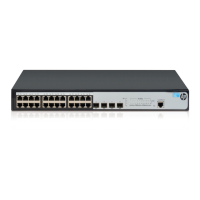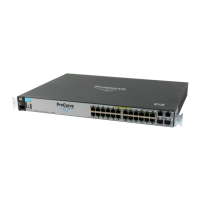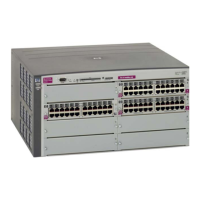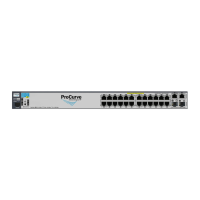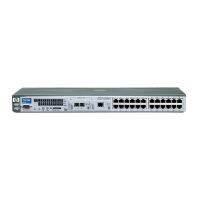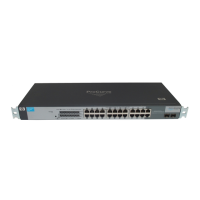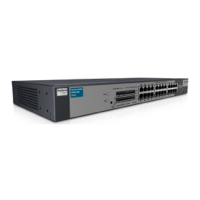Information Commands 31
Table 20 802.1x information
Field Description
Backend Auth State Displays the Backend Authorization State. The Backend
Authorization state can be one of the following:
• request
• response
• success
• fail
• timeout
• idle
Spanning Tree information
The following table describes the Spanning Tree Protocol (STP) information commands.
Table 21 STP information commands
Command Usage
show spanning-tree stp <1-128>
Displays information about the spanning tree group.
Command mode: All
show spanning-tree stp <1-128> bridge
Displays STP bridge information.
Command mode: All
show spanning-tree [<1-128>] information
Displays STP information.
Command mode: All
The following command displays Spanning Tree information:
show spanning-tree stp <1-128> information
Command mode: All
------------------------------------------------------------------
upfast disabled, update 40
------------------------------------------------------------------
Spanning Tree Group 1: On (STP/PVST+)
VLANs: 1
Current Root: Path-Cost Port Hello MaxAge FwdDel
8000 00:02:a5:d1:0f:ed 8 20 2 20 15
Parameters: Priority Hello MaxAge FwdDel Aging
32768 2 20 15 180
Port Priority Cost FastFwd State Designated Bridge Des Port
---- -------- ---- -------- ---------- --------------------- -------
1 0 0 n FORWARDING *
2 0 0 n FORWARDING *
3 0 0 n FORWARDING *
The switch software uses the IEEE 802.1d Spanning Tree Protocol (STP). If RSTP/MSTP is turned on, see the “Rapid
Spanning Tree information” section for Spanning Tree Group information. In addition to seeing if STP is enabled or
disabled, you can view the following STP bridge information:
• Status of Uplink Fast (upfast)
• Current root MAC address
• Path cost
• Port
• Hello interval
• Maximum age value
• Forwarding delay
• Aging time
You can also refer to the following port-specific STP information:

